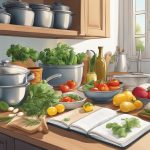The Mediterranean lifestyle is celebrated for its vibrant blend of culture, food, and an emphasis on a balanced way of life. Arts and crafts play a pivotal role in this region’s cultural identity, offering a way for individuals to express their creativity, while also often serving practical purposes. From pottery that tells the story of ancient civilizations to modern digital arts that capture the beauty of Mediterranean life, creativity is an integral part of daily living in these coastal cultures.
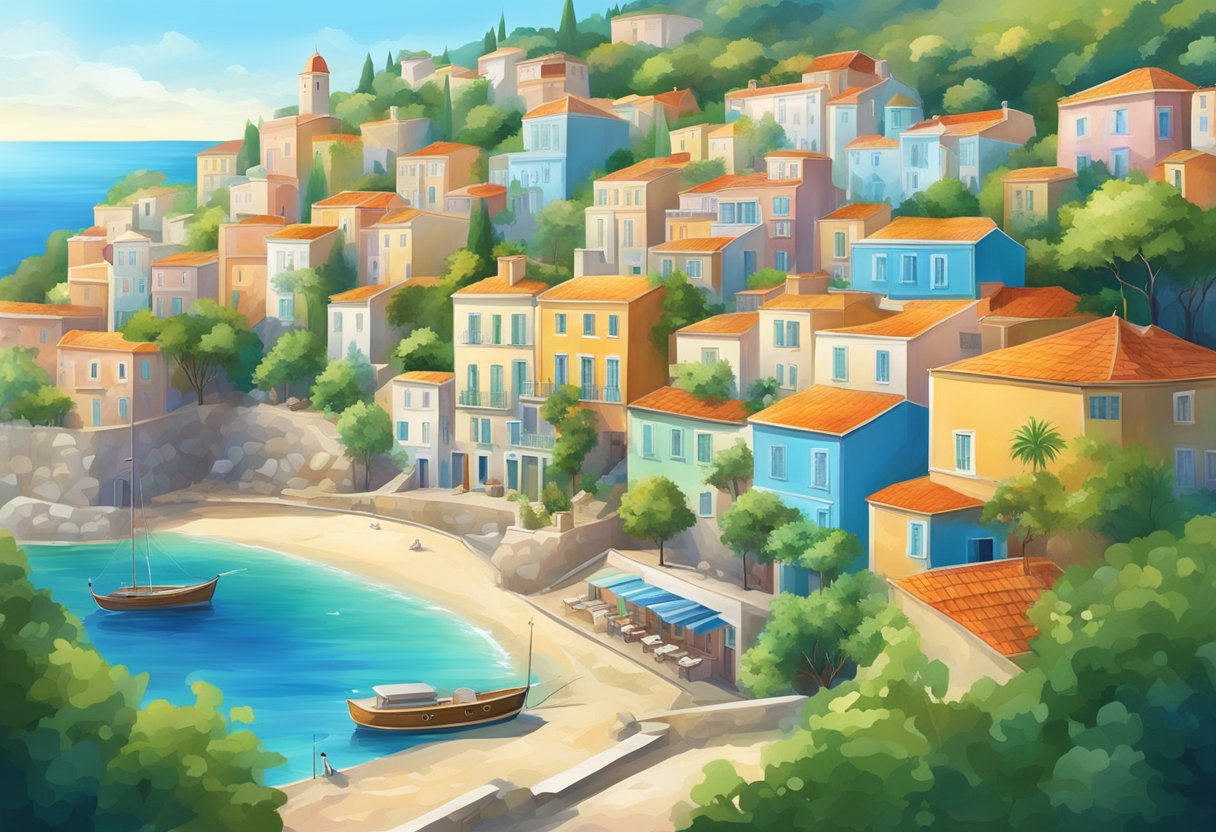
Engaging in hobbies and crafts is more than a mere pastime in the Mediterranean; it’s a means to achieve mental well-being and social connection. The rhythmic motion of knitting, the meticulous attention required for gardening, or the communal spirit of dance and music, all contribute to a more mindful and connected lifestyle. These creative outlets are not only deeply rooted in tradition but are also adapted to contemporary life, reflecting how the region’s historical legacy continues to shape its current artistic expressions.
Key Takeaways
- The Mediterranean lifestyle embraces creativity as part of its cultural identity.
- Hobbies and crafts in the Mediterranean contribute to mental well-being and community building.
- Traditional artistic expressions are maintained and adapted within contemporary Mediterranean life.
Table of Contents
Understanding the Essence of Mediterranean Crafts
Mediterranean crafts are a rich tapestry of art forms that encapsulate the region’s long-standing cultural traditions and the inherent creativity of its people.
History and Culture of Mediterranean Art Forms
Mediterranean art forms have historical roots that intertwine with the region’s diverse cultures. Crafts such as ceramics, textiles, and metalwork reflect a mosaic of influences from ancient civilizations, including the Greeks, Romans, and Phoenicians. These art forms have not only served aesthetic purposes but also held significance in daily life and religious practices. Ceramics often bear the marks of the location’s natural resources and technology, whilst textiles narrate stories through patterns and colors passed down through generations.
The Role of Creativity and Craft in the Mediterranean Lifestyle
Creativity plays a central role in the Mediterranean lifestyle, as crafts are often an expression of individual and collective identities. They serve as a medium through which artisans can share their experiences and ideas. In the Mediterranean, to craft is not just to create but to continue a dialogue between the past and present. Every stitch in a tapestry, every brushstroke on pottery, each molded piece of metal is infused with a long lineage of art and culture—a testament to the region’s enduring spirit of creativity.
Diving Into Popular Crafts and Hobbies
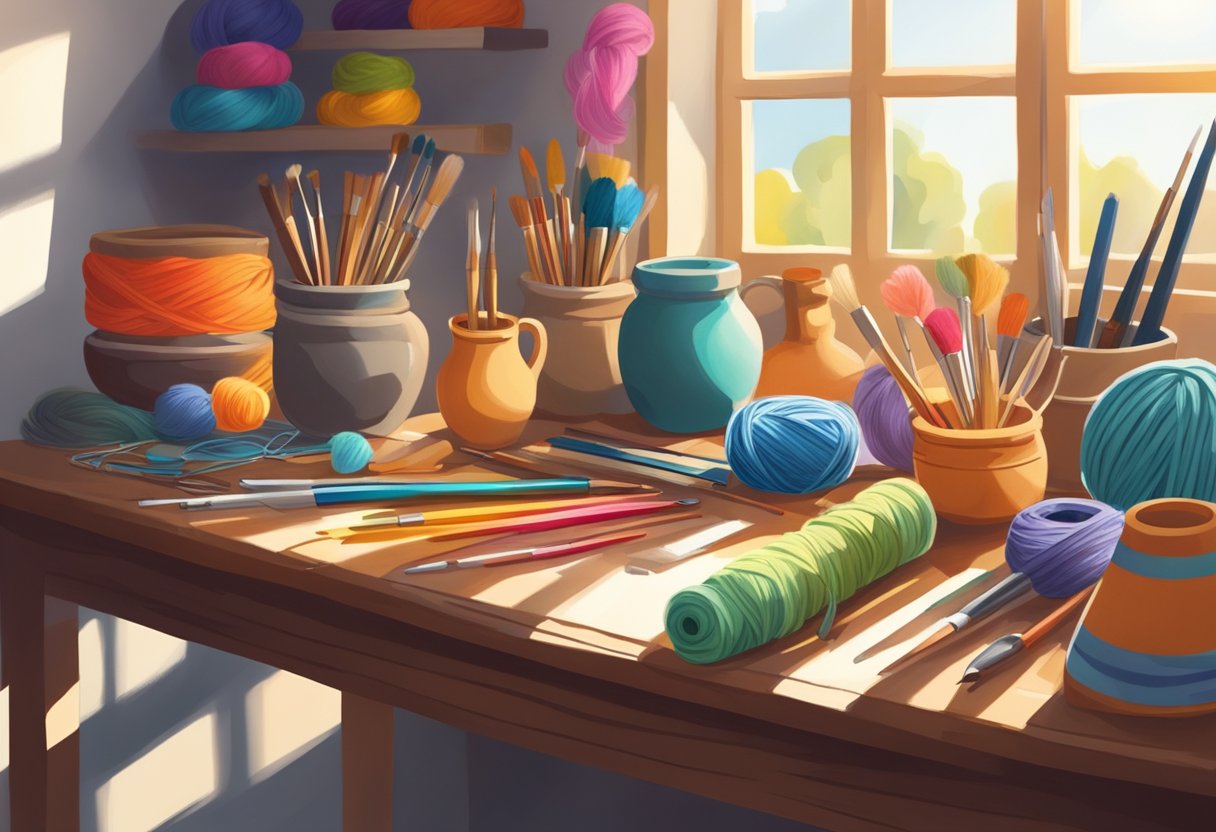
The Mediterranean lifestyle, renowned for its vibrant culture and emphasis on well-being, also offers a variety of creative outlets. From traditional textile methods to fine arts and intricate paper crafts, these activities not only foster creativity but also provide a serene pastime that complements the famed Mediterranean ethos.
Textile and Fiber Arts
Knitting and Crochet: A cornerstone of textile crafts, knitting and crochet enable artisans to produce everything from delicate doilies to robust sweaters. The Mediterranean’s rich history in textile production provides an inspiring context for these crafts, with an emphasis on utilizing natural yarns.
- Yarns: Often made from wool, cotton, or silk, encompass the textures of the region.
- Needles and Hooks: Tools vary from thin needles for fine patterns to larger hooks for chunky designs.
Weaving and Embroidery: These crafts are intricately linked to the Mediterranean’s artistic heritage. On the loom, weaving transforms yarns into fabric, while embroidery adds color and flair to plain textiles.
- Looms: From simple frames to complex floor models, looms are crucial for fabric creation.
- Embroidery: Utilizes a needle to embellish fabrics with patterns and pictures.
Decorative and Fine Arts
Painting and Drawing: Artists in the region are drawn to the Mediterranean’s landscapes, translating them into stunning visuals. The use of vibrant watercolors, oils, and pastels is common, capturing the essence of sea and land.
- Pencils and Brushes: Tools to apply color on canvas or paper.
- Sculpting and Pottery: 3D art forms that involve shaping materials like clay or marble by hand.
Wood Carving, Metalworking, and Welding: Skilled artisans often take to carving intricate designs in olive wood or shaping metal and glass, reflecting the natural beauty and resources of the Mediterranean.
- Wood Carving: Utilizes tools like chisels and knives.
- Metalworking/Welding: Techniques for creating both functional items and art.
Papercrafts and Calligraphy
Origami and Paper Quilling: These paper folding and shaping activities are precise and meditative, offering an outlet for meticulous crafters who take joy in minute details and the manipulation of paper.
- Origami: The art of paper folding, originating from Japan but embraced globally.
- Paper Quilling: Involves rolling and shaping narrow strips of paper into designs.
Art Journaling and Bullet Journaling: Both forms of journaling allow for a combination of organization and expression, with the use of calligraphy to add an artistic touch to the written word.
- Art Journaling: Integrates sketching, painting, and writing.
- Bullet Journaling: Marries note-taking with creative design elements.
The Impact of Crafts on Mind and Body
Incorporating crafts into one’s life offers a multitude of benefits for both mental health and physical wellbeing. Specifically, crafting can act as a creative outlet, reducing stress and promoting relaxation, while also encouraging productivity and dexterity.
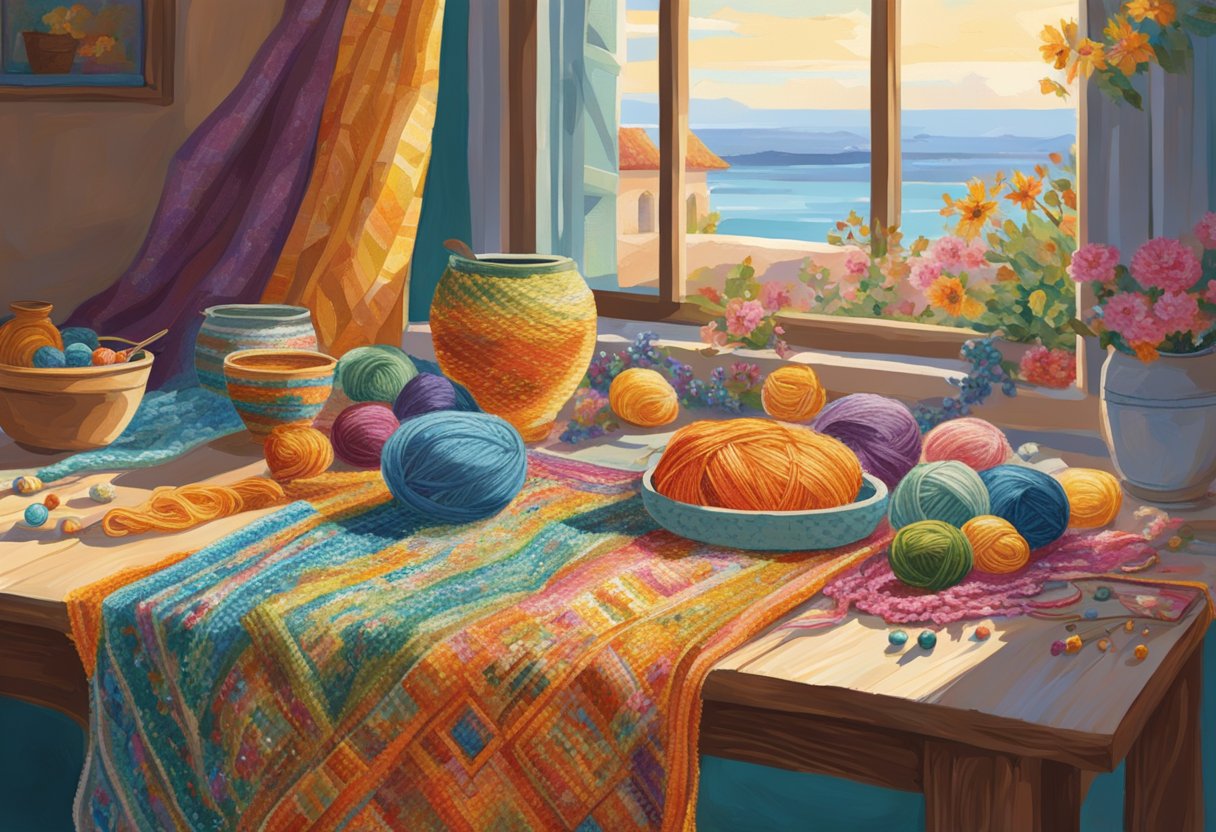
Mental Health Benefits of Creative Activities
Crafting serves as a powerful therapeutic tool, enhancing mental health by providing a means to express oneself and manage stress. Studies have shown that activities such as knitting can be relaxing and meditatively rhythmic, aiding in alleviating symptoms of anxiety and depression. Engaging in creative hobbies has the potential to boost cognitive function and reduce the risk of cognitive impairment.
- Relaxation: The repetitive motions of crafting can induce a state of calm, making it a particularly effective method for relaxation.
- Expression: Crafts enable individuals to communicate emotions and thoughts, fostering a sense of accomplishment and personal identity.
Physical Benefits of Engaging in Hobbies
Hobbies like crafting can also offer physical benefits. The fine motor skills required in arts and crafts may improve dexterity and hand-eye coordination. These activities can be adapted to suit various physical abilities, making them an inclusive and productive way to spend leisure time.
- Dexterity and Coordination: Regularly practicing a craft can lead to improved fine motor skills.
- Adaptability: Many crafts can be tailored to individual needs, ensuring that they can be a source of physical activity for a diverse range of persons.
Engaging in arts and crafts has been linked to successful aging, and can contribute to better overall physical health in the long term.
Incorporating Crafts in Social and Family Life
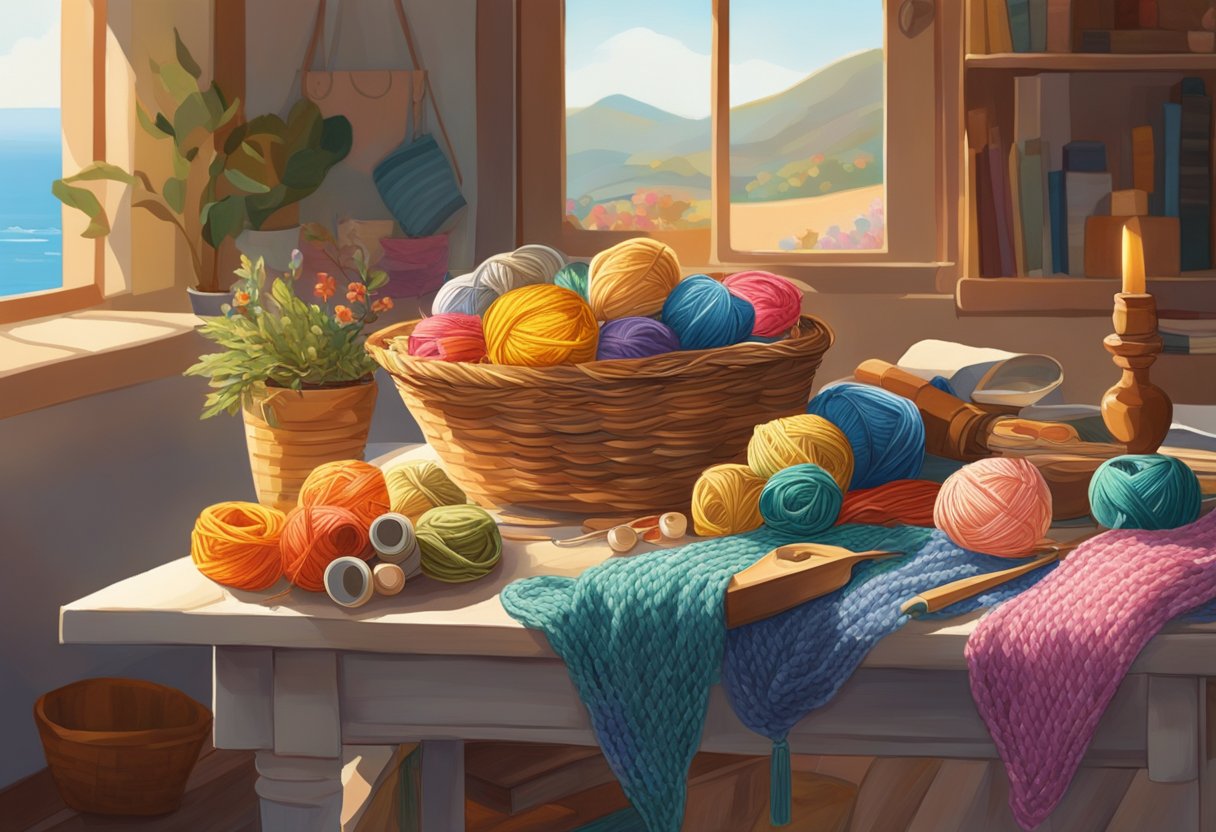
Crafting activities bond individuals with their families and communities through the creation and sharing of handmade items. This tradition aligns closely with the communal spirit of the Mediterranean lifestyle, frequently described in terms of shared meals and activities that foster a sense of unity.
Crafts as a Means of Strengthening Family Bonds
Families in the Mediterranean often turn to crafts as a collective activity that promotes togetherness. Knitting, for instance, is not just a solitary pastime but becomes a collaborative endeavor when family members join to create a quilt or a set of matching scarves. Each stitch contributes to a shared family heritage, with finished pieces often becoming treasured heirlooms.
- Family Crafting Nights: Regularly scheduled evenings where each family member contributes to a collective project can foster a familial synergy.
- Teaching Crafting Skills: Older generations pass down traditional skills to younger ones, ensuring that cultural practices thrive alongside family bonds.
Sharing Craftsmanship Within the Community
Craftsmanship resonates beyond the home, extending its reach through community classes or markets. Loved ones often gather in local meet-ups to craft together, share techniques, or offer supportive critiques. Social media platforms like Instagram and Pinterest serve as virtual extensions of this community, enabling crafters to share their handmade goods with wider audiences.
- Community Workshops: They often feature local artisans teaching their crafts, reinforcing the value of shared expertise and communal learning.
- Craft Fairs: These events are social occasions where the community comes together to celebrate and sell their crafts, often featuring food from a gluten-free Mediterranean diet to cater to all visitors.
Learning New Skills and Techniques
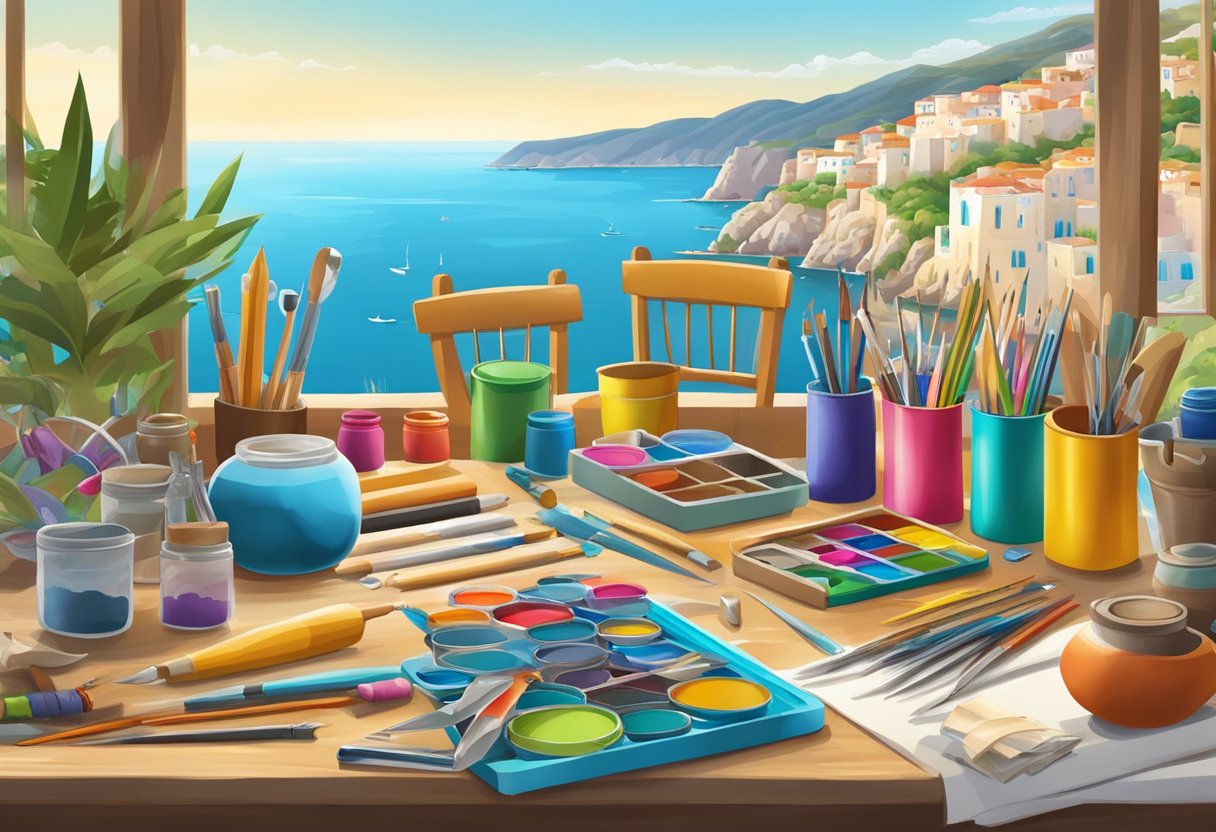
Embracing crafts and hobbies within the Mediterranean lifestyle offers not only a chance to enjoy the region’s rich artistic heritage but also to learn valuable skills. Here, individuals can explore traditional techniques, becoming active bearers of Mediterranean culture.
Beginner Tips for Getting Started with Crafts
For those looking to weave the vibrant textures of the Mediterranean into their daily lives, beginning a new craft may seem daunting. Here are foundational steps to ensure a smooth start:
- Choose Your Craft: Before diving in, research and select a craft that resonates with you—whether it’s pottery, basket weaving, or embroidery.
- Gather Materials: High-quality materials can enrich the crafting experience. Opt for locally sourced Mediterranean materials where possible.
- Start Simple: Begin with basic projects. As confidence grows, so too will the complexity of the pieces one can create.
- Patience is Key: Mastery takes time. Each mistake is a step closer to becoming skilled in the chosen craft.
Workshops and Community Classes for Skill Improvement
Community is at the heart of Mediterranean culture, and local workshops provide an excellent way for crafters to improve their skills. Here are considerations when looking for the right class:
- Find a Local Artisan: Search for classes led by local craftspeople. They are founts of knowledge and technique, particularly for specialized crafts like pottery.
- Look for Small Groups: Smaller class sizes mean more one-on-one attention, allowing for deeper learning of the new skill being taught.
- Consistency: Regular attendance is crucial. Continual practice under the guidance of an instructor reinforces learning.
- Engage with Peers: Learning is amplified when shared. Peers can offer different perspectives and tips to enhance one’s craft journey.
Gardening and Outdoor Creative Hobbies
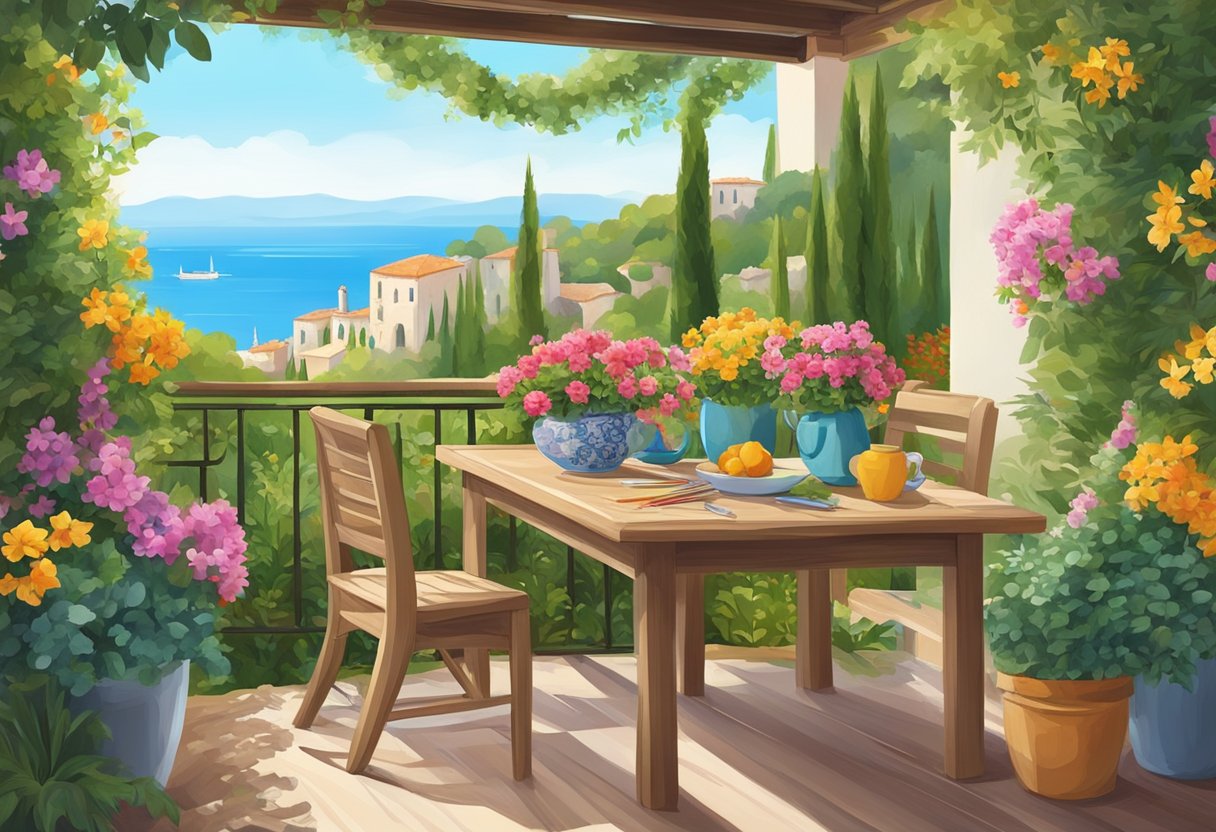
In the heart of the Mediterranean lifestyle, gardening is not merely a leisure activity but a crucial element of living. It is here that individuals cultivate not only plants but also patience and serenity. Gardening allows one to closely interact with the land, nurturing and fostering growth with a consistent hand.
Gardening: It nurtures a deep connection with nature, where one can grow herbs and vegetables pertinent to a gluten-free Mediterranean diet. Tomatoes, peppers, and various leafy greens thrive under the care of those who value sustainable, healthful eating.
Flower Arranging: This art form complements gardening pursuits. Creators assemble vivid bouquets, often using flowers grown in their own spaces. The process enhances one’s appreciation for aesthetics and the natural beauty of the Mediterranean flora.
| Outdoor Creative Hobby | Benefits |
|---|---|
| Gardening | Enhances diet, promotes relaxation, builds patience |
| Flower Arranging | Boosts creativity, complements gardening, adds beauty |
Yet, gardening in this region extends beyond the individual; it fosters community and tradition, as shared techniques and experiences are as rich as the soil itself. Through each seed planted and nurtured, values are passed on, and the essence of the Mediterranean tapestry of life is woven from one generation to the next.
Music and Dance as Expressive Outlets
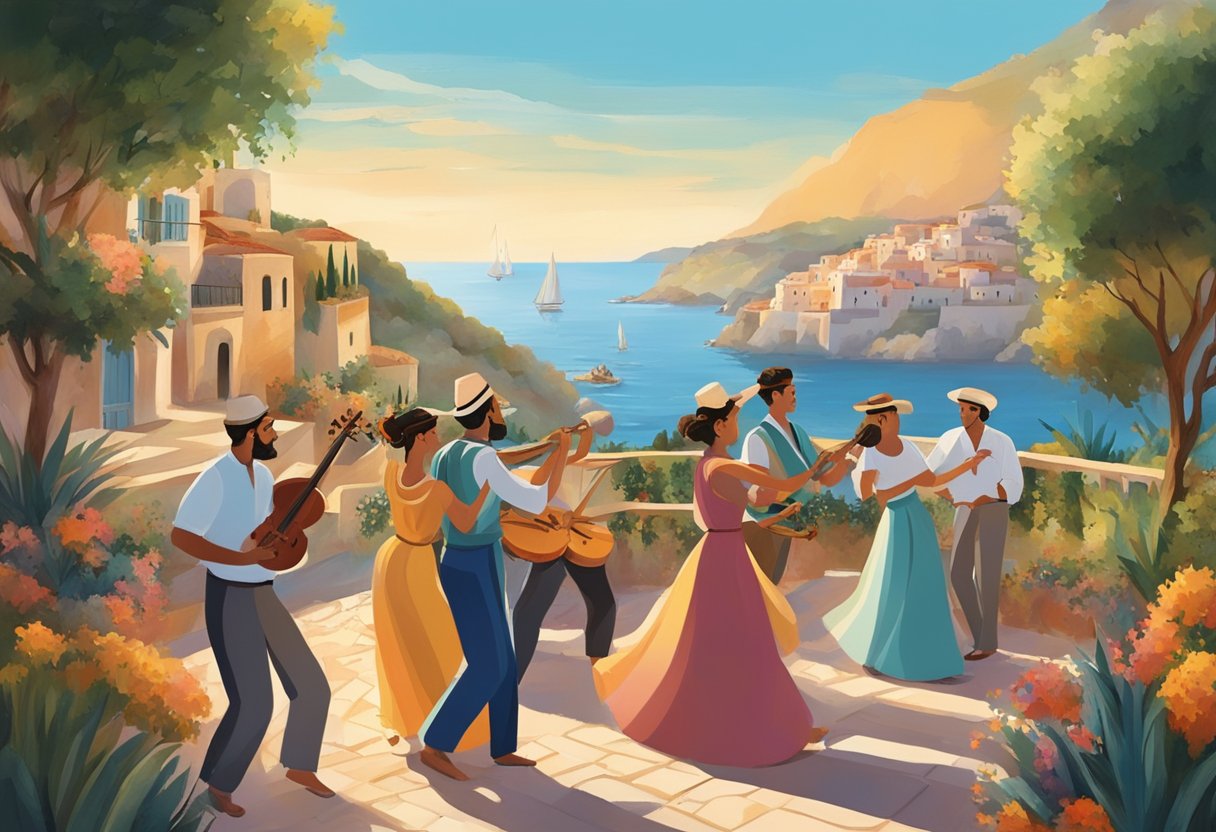
In the vibrant landscape of the Mediterranean, music and dance are powerful forms of expression rooted in tradition and community. They offer a glimpse into the rich cultural heritage and provide an avenue for emotional release and celebration.
The Influence of Mediterranean Music
Mediterranean music has evolved through a blend of various cultures, often characterized by the use of traditional musical instruments like the Greek bouzouki, the Spanish guitar, and the Arabic oud. This music often reflects themes of love, nature, and the sea, serving as an integral part of everyday life as well as special festivals and celebrations. The melodies and rhythms are not only meant for entertainment but also for fostering social cohesion and continuity of tradition.
Dance in the Mediterranean Tradition
Dance in the Mediterranean is an embodiment of the region’s spirit. Dancing is not just a physical activity, but a means of storytelling and expression. Each country in the Mediterranean basin has its own traditional dances, like the flamboyant flamenco of Spain or the precise and intricate steps of Greek folk dances. These dances are often taught from generation to generation and performed at communal gatherings, serving both a celebratory and ritualistic purpose.
Creative Cooking and Baking
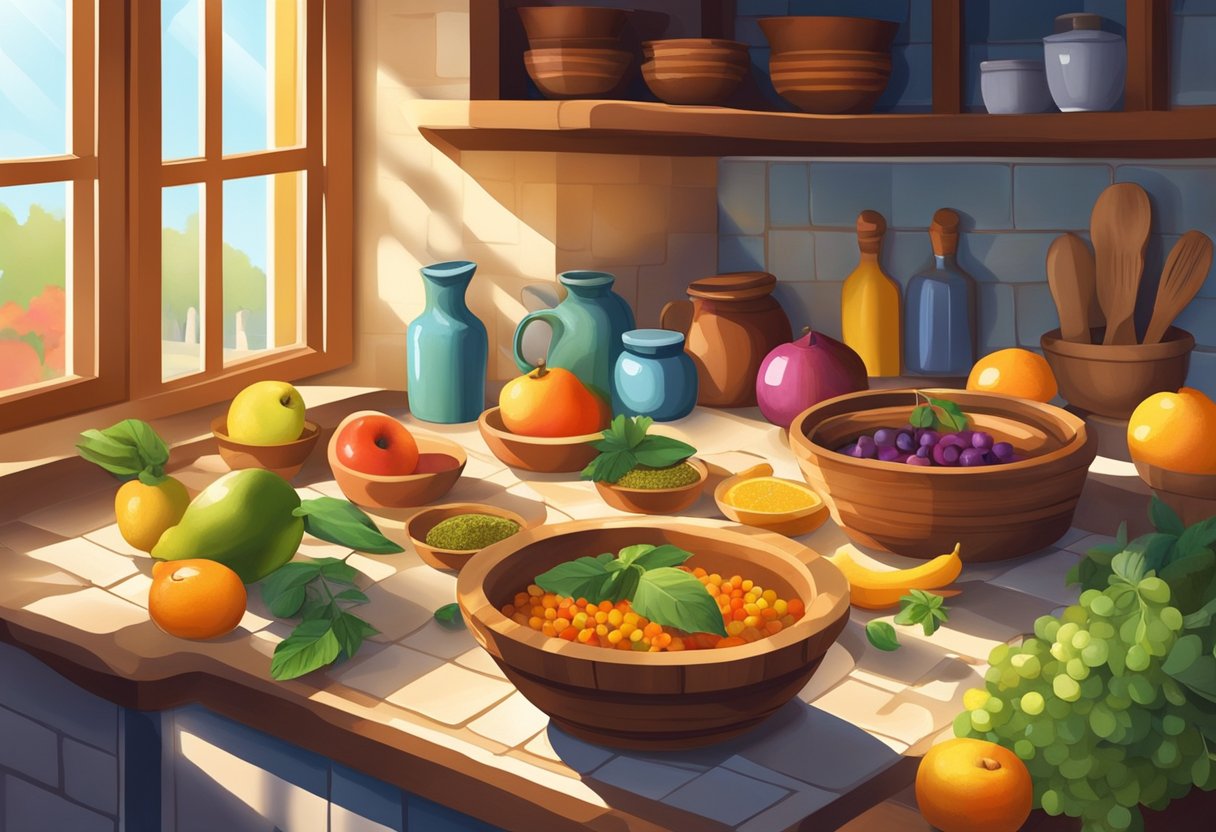
In the Mediterranean lifestyle, creative cooking and baking are more than just daily tasks; they are a form of expression and a celebration of culture. Participation in the kitchen allows individuals to explore the rich tapestry of Mediterranean flavors, many of which lend themselves well to a gluten-free diet.
Cooking in the Mediterranean region is characterized by the use of fresh, high-quality ingredients. Vegetables, fruits, and grains like rice form the backbone of many dishes, prepared with a light touch to enhance their natural flavors. Gluten-free grains, such as rice, are staples in Mediterranean cooking, offering a versatile base for a variety of recipes.
| Gluten-Free Grains | Uses in Cooking |
|---|---|
| Rice | Paella, risotto, pilafs |
| Millet | Salads, side dishes |
| Quinoa | Stuffed vegetables, soups |
When it comes to baking, the Mediterranean region offers a plethora of options that align with a gluten-free lifestyle. Almond flour and polenta provide excellent alternatives to traditional wheat flour, creating delightful pastries and breads that everyone can enjoy. Olive oil often replaces butter, adding a subtle flavor and making baked goods moist while keeping them dairy-free.
Gluten-free baking ingredients:
- Almond flour
- Polenta
- Chickpea flour
- Tapioca starch
Mediterranean food is known for its communal nature, often enjoyed with family and friends. Sharing a freshly baked loaf of gluten-free bread or a batch of almond cookies can foster a sense of togetherness. Additionally, many Mediterranean dishes can be paired with local wine, which is naturally gluten-free, enhancing the overall dining experience.
They take pride in the art of baking, often incorporating locally sourced fruits like figs and grapes into their confections, not just for flavor, but to embrace the local bounty. Similarly, cooking often involves simmering dishes with plenty of herbs and spices, reflecting a tradition of flavor and zest for life.
In conclusion, the act of cooking and baking within the gluten-free Mediterranean diet is a joyful and creative outlet. It maintains the essence of the regional cuisine while offering nutritious and delectable options for those with dietary restrictions.
Photography and Digital Arts
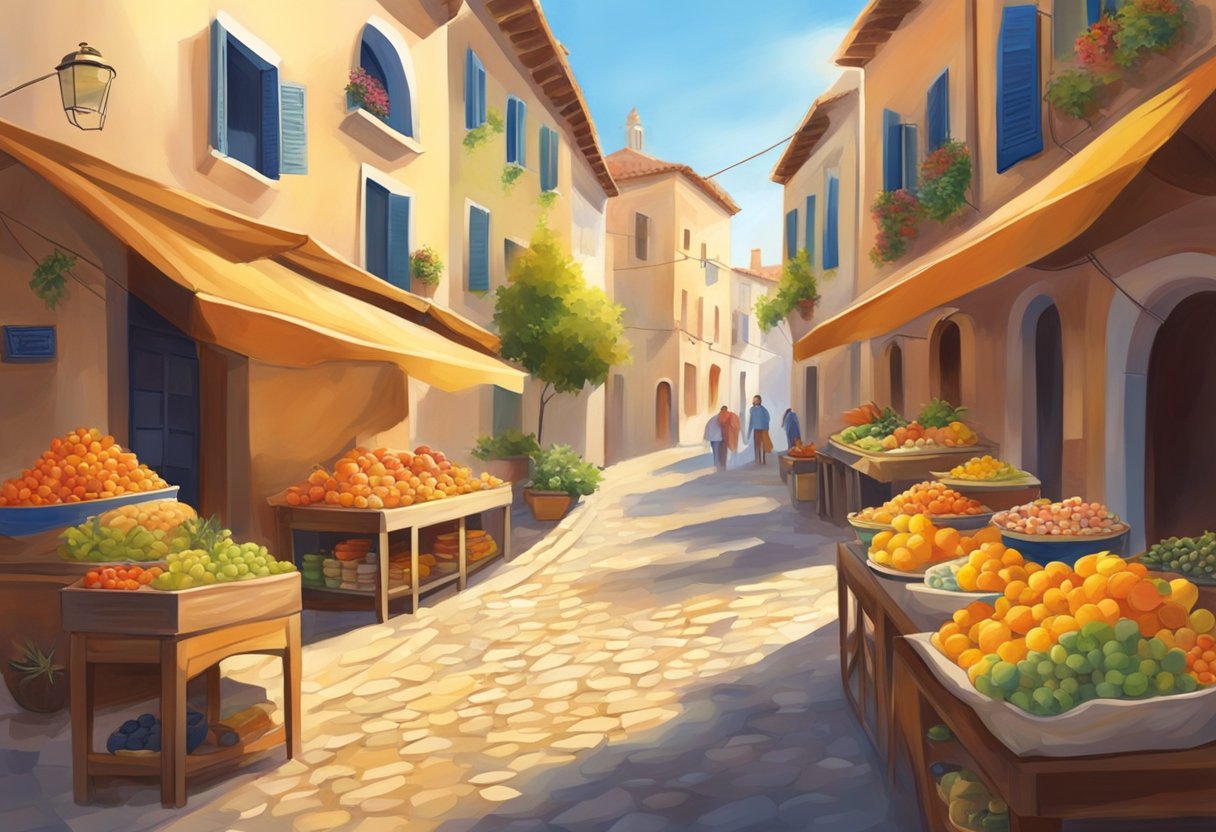
In the realm of Mediterranean lifestyle, photography emerges as a vivid storyteller, capturing the essence of sun-drenched landscapes, colorful cuisines, and vibrant cultures. With digital arts incorporating graphic design elements via tools like Photoshop, the creative potential is boundless.
Photography offers a window into the Mediterranean’s soul, embodying the lifestyle’s emphasis on natural beauty and simplicity. The use of light and shadow in photographs accentuates textures and shades inherent in fresh, gluten-free ingredients, blending art with culinary traditions.
How to integrate photography and digital arts into the Mediterranean experience:
- Capture Culinary Masterpieces: Take photos of gluten-free Mediterranean dishes, focusing on the rich palette of ingredients.
- Photoshop Techniques: Use editing software to enhance the vividness of the raw Mediterranean elements.
- Graphic Presentations: Create infographics highlighting the benefits of a gluten-free Mediterranean diet.
| Activity | Tools | Focus |
|---|---|---|
| Architectural Photography | Camera | Historical Edifices |
| Food Photography | Lens, Light | Gluten-Free Dishes |
| Landscape Photography | Tripod | Natural Scenery |
| Digital Illustration | Tablet | Graphic Representations |
Photographers and digital artists often showcase the rustic tablescapes with tantalizing gluten-free options, reflecting health-conscious food choices. From the careful arrangement of vibrant vegetables to the bold contrasts of a sunset over the sea, these creators immortalize moments through their lenses and screens, unveiling the spirit of the Mediterranean through photos and digital artistry.
Hobbies That Turn Into Careers
Traditionally, the Mediterranean lifestyle emphasizes a balance between work, leisure, and craft. People within this region have long found ways to transform their passions into viable careers, often drawing from a rich cultural affinity for creative arts and culinary endeavors aligned with the health-focused Mediterranean approach.
List of Hobbies and Corresponding Career Opportunities:
-
Cooking and Baking: A hobbyist’s mastery in preparing gluten-free Mediterranean cuisine can lead to opportunities as a chef, cookbook author, or culinary instructor. Their skills can satisfy a growing demand for healthy, allergen-conscious meal options.
-
Pottery and Ceramics: Crafters may sell their handmade, Mediterranean-inspired goods or teach pottery classes, turning a pastime into a source of income.
-
Photography: Hobbyist photographers can specialize in capturing the essence of the Mediterranean—from its landscapes to cultural events—leading to professions in travel photography or photojournalism.
-
Gardening: Enthusiasts who cultivate Mediterranean plants, herbs, and produce might pursue careers in landscape design, agricultural consulting, or open their farm-to-table restaurants.
Financial Consideration:
A hobbyist seeking to monetize their craft should be aware that turning a hobby into a career may require initial investment. However, by leveraging online platforms and local markets, they can showcase their work to a wider audience, leading to potentially lucrative outcomes.
They should be mindful about the value their unique skills offer—e.g., gluten-free Mediterranean cooking is a niche that caters to both health-conscious individuals and those with dietary restrictions, providing a solid customer base.
In synthesis, when hobbies indicative of the Mediterranean lifestyle are nurtured into careers, they not only preserve cultural traditions but can also yield financial benefits and personal fulfillment.
Crafts and Environmental Awareness
Within the Mediterranean region, traditional crafts have always aligned closely with sustainability and eco-friendly practices. The use of natural materials, such as wood, clay, and fibers, is very common in creating beautiful yet functional items. Notably, these materials are locally sourced, reducing the carbon footprint associated with transportation.
Recycling and Upcycling:
Crafters are increasingly finding innovative ways to reuse materials. For instance, old fabric scraps can be transformed into vibrant quilts, exemplifying an ethos of resourcefulness.
-Eco-friendly Crafts:
- Beekeeping: This hobby supports pollinator populations and produces natural honey.
- Soup Can Pen Holder: A simple project using reused cans for organization.
- Wildflower Seed Bombs: They encourage the growth of native flora and foster biodiversity.
Local Materials:
Using materials that are indigenous to the Mediterranean, like olive wood or local clay, not only taps into the rich cultural heritage but also promotes eco-conscious choices. These materials don’t require long-distance transport, effectively minimizing environmental impact.
DIY Projects:
The creation of homemade items like reusable food wraps from beeswax is gaining popularity. These initiatives not only align with environmental conservation efforts but also allow for a personal touch in everyday living.
The Mediterranean lifestyle, with its emphasis on sustainability, dovetails with a global imperative to adopt more eco-friendly habits. Through crafting, individuals can make a positive environmental impact, enriching their lives and protecting the natural world.
Exploring New Frontiers
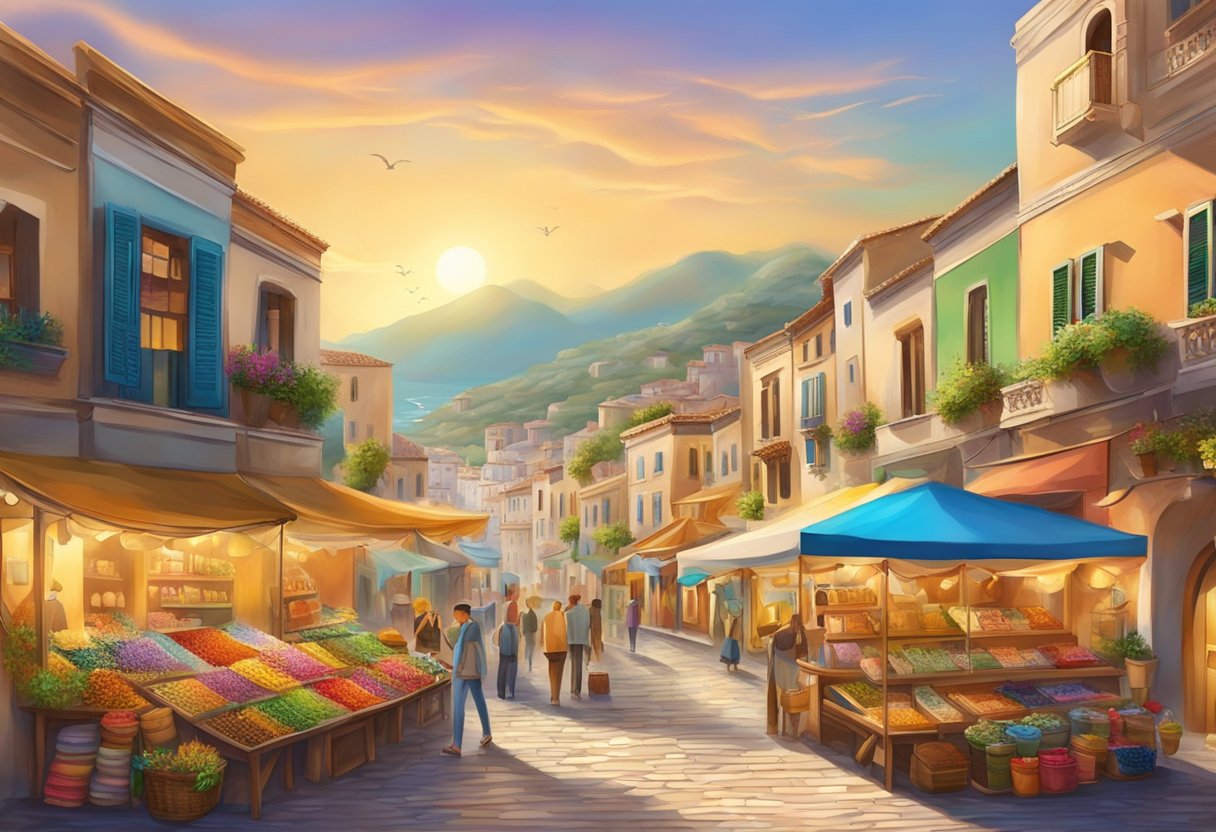
The Mediterranean lifestyle, renowned for its emphasis on balance and well-being, extends beyond cuisine to encompass engaging pastimes that blend tradition with innovation. Individuals are increasingly incorporating modern technology into their creative pursuits, such as 3D printing and innovative crafting technologies that mirror the lifestyle’s values of sustainability and artisanship.
3D Printing Applications
The advent of 3D printing has opened a multitude of avenues for hobbyists to express their ingenuity. In particular, the technology is being used to create custom kitchenware that adheres to a gluten-free Mediterranean diet. These include:
- Utensils: Items such as pasta measures, bread stamps, and cookie cutters.
- Serveware: Customized plates and bowls with gluten-free diet reminders etched into the design.
3D printing allows for the crafting of personalized items that cater specifically to the dietary needs and aesthetic preferences of individuals following this lifestyle.
Innovative Crafting Technologies
Innovative crafting technologies have transformed how crafts are approached in the Mediterranean lifestyle. Here’s how:
-
Laser Cutters: These machines are utilized to create intricate wooden decorations that feature Mediterranean motifs, perfect as kitchen decor or for serving gluten-free pastries.
-
Digital Knitting: Users can design and produce intricate patterns on gluten-free fabric placemats or napkins, enhancing the dining experience.
By incorporating these technologies into their crafts, enthusiasts are able to not only preserve the essence of the Mediterranean lifestyle but also to enhance their daily living with custom, functional art pieces that support their dietary choices.
Lesser-Known Creative Hobbies
Exploring creative hobbies provides a wealth of opportunities for self-expression and relaxation. Within the Mediterranean lifestyle, often celebrated for its emphasis on community and well-being, lesser-known crafts offer a refreshing take on personal fulfillment and cultural enrichment.
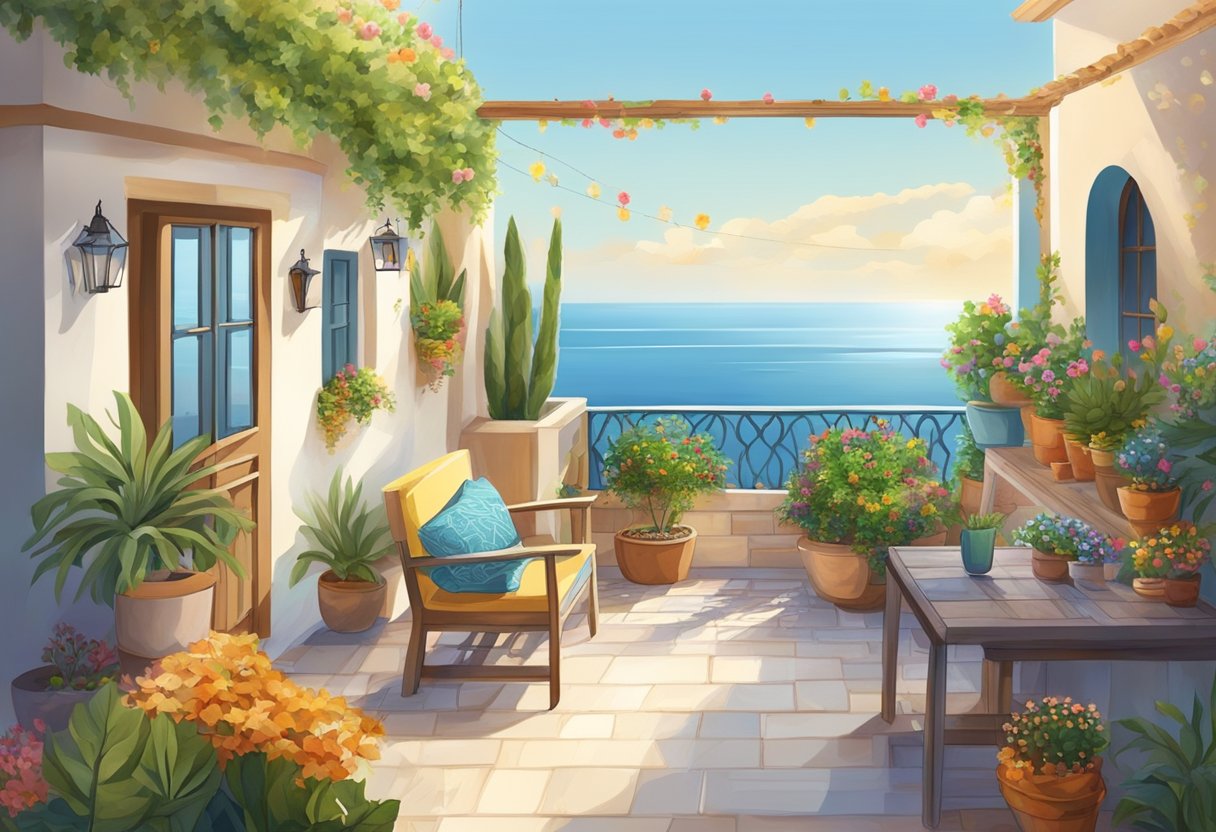
Candle Making and Home Décor Crafts
Candle making offers individuals a chance to create custom ambiance for their homes, influencing mood with different scents and colors. The process, which involves melting and molding wax, allows one to blend natural fragrances reminiscent of the Mediterranean, like olive oil, citrus, and sea salt. This craft not only enhances the aesthetic of any living space but also connects hobbyists to the tranquility of the region’s lifestyle.
- Essential Materials: Soy or beeswax, wick, fragrance oil, dye.
- Popular Techniques: Container candles, pillar candles, votives.
Jewelry Making and Beadwork
Jewelry making and beadwork are forms of artistry that enable creators to fashion unique accessories inspired by the vibrant tones of the Mediterranean landscape. Artists often utilize locally-sourced materials such as ceramic beads, stones, and sea glass, reflecting the natural beauty of the area. They stitch these pieces together using techniques like cross-stitch or needlepoint, resulting in wearable works of art that hold personal value and cultural significance.
- Preferred Materials: Glass beads, semi-precious stones, wire, thread.
- Favored Techniques: Stringing, wire-wrapping, bead weaving.
Unique Crafting Hobbies
The Mediterranean lifestyle also embraces a variety of unique crafting hobbies that focus on practicality and tradition, such as basket weaving or soap making. These activities often rely on natural resources readily available in the region and underscore the importance of sustainable practices. Crafters take pride in creating functional items like handwoven baskets from olive branches or homemade soap infused with local herbs.
- Distinct Crafts: Quilting, perler beads, needlepoint, hand lettering.
- Specialties: Decorative crafts, personalized gifts, functional art.
Through these lesser-known creative hobbies, individuals not only celebrate the Mediterranean ethos of living well but also cultivate a sense of community by sharing their handcrafted goods with others. Whether it’s a quilt that warms a family home or a hand-lettered invitation to a communal feast, each creation is a testament to the enduring charm of Mediterranean craftsmanship.
The World of Collectibles and Memorabilia
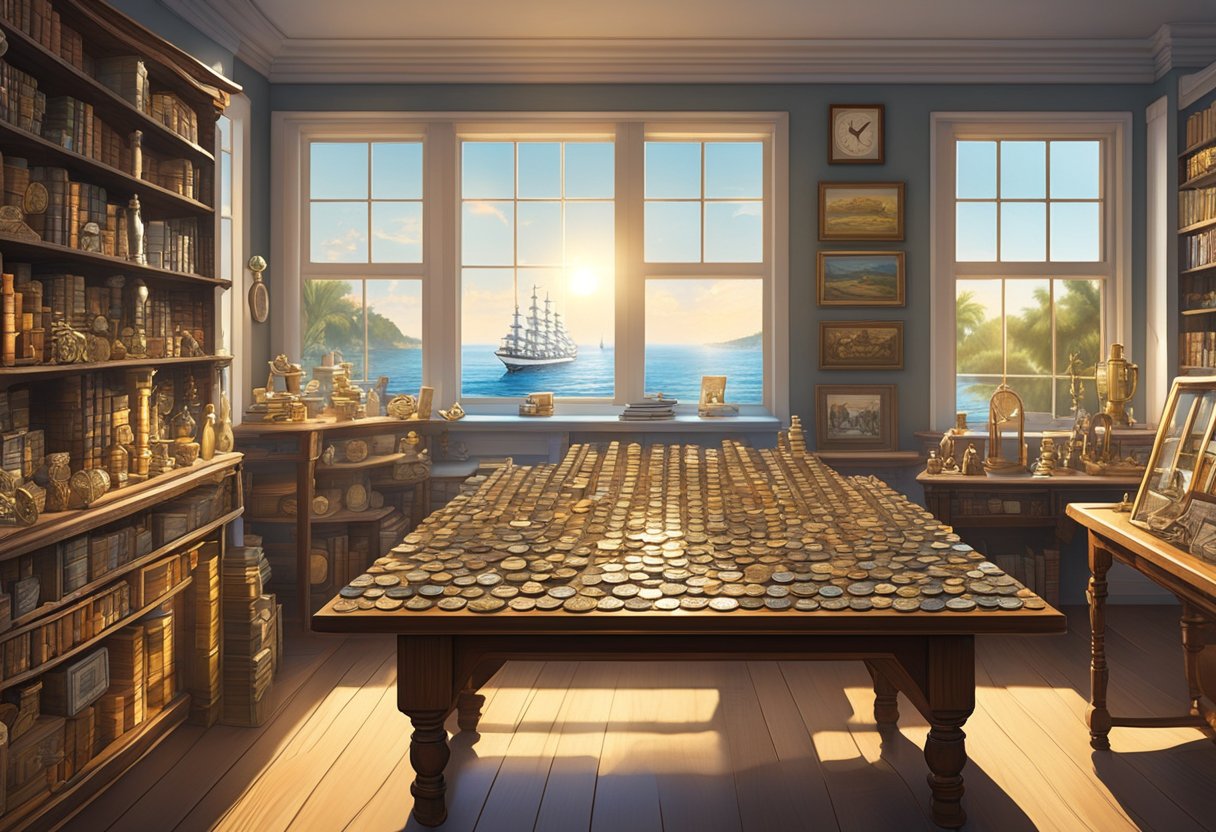
Within the Mediterranean lifestyle rests a fascination with the past and the artifacts that tell its story. Collectibles and memorabilia, which range from ancient coins to vintage wine bottles, uphold a connection to this region’s rich history and tradition. They not only offer a glimpse into bygone eras but also present an opportunity for preservation and investment.
Coins and Currency:
They serve as monetary snapshots, each telling a story of economic conditions, political shifts, and cultural milestones. Collectors appreciate their historical significance, and mint condition pieces are particularly coveted for their rarity and aesthetic appeal.
Ceramics and Pottery:
Mediterranean artisans are renowned for their intricate designs and mastery of glazes. Earthenware from this region reflects the natural resources and cultural motifs, making it a popular category among collectors.
Wine Collecting:
From a collectibles perspective, the Mediterranean’s vintage wines are lauded for their aging potential. Oenophiles might invest in choice bottles, which, when stored correctly, can become valuable over time.
Olive Oil Vessels:
Olive oil, a staple of the gluten-free Mediterranean diet, was traditionally stored in ceramic jars. The vessels, often adorned with markings of origin, have become treasured collectibles indicating the oil’s vintage and provenance.
Stamps and Postcards:
Correspondence materials like stamps and postcards capture the historical communication between regions. They are often pursued for their unique designs and connections to significant historical periods or events.
- Books and Manuscripts:
Literature and written records are pivotal. Rare manuscripts, some which pertain to the culinary arts and gluten-free recipes of the Mediterranean diet, are held in high regard in the collectibles market.
These items are treasures in the eyes of those who value the Mediterranean’s historical and cultural lineage, providing not only aesthetic pleasure but also a tangible link to the region’s heritage.
Writing and Storytelling
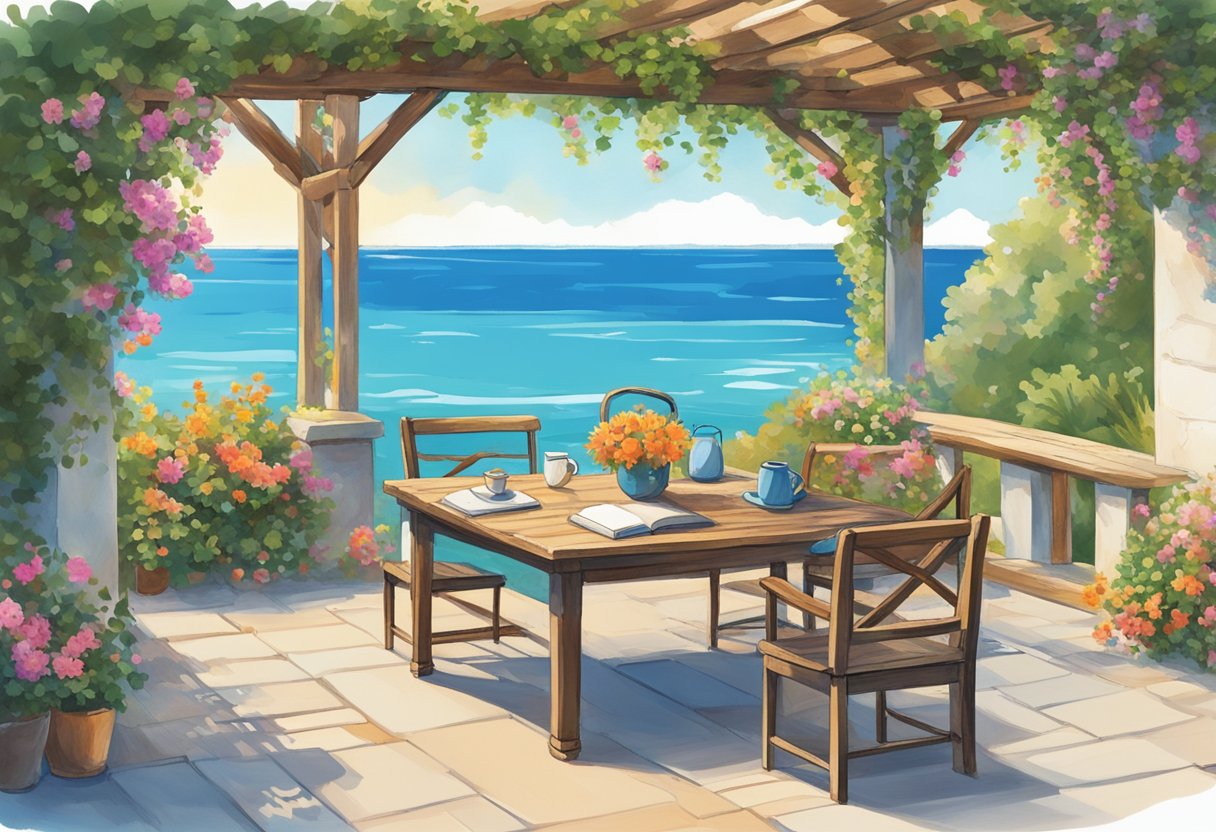
In the vibrant Mediterranean lifestyle, creative writing and storytelling serve as expressive avenues, mirroring the region’s rich culture and traditions. They cultivate one’s ability to convey narratives tied to personal and community experiences, often seasoned with the zest of Mediterranean life.
Crafting a tale or keeping a journal weaves together the ingredients of daily life, much like the careful selection of herbs in a gluten-free dish. In the Mediterranean, storytelling is not just about entertainment; it’s about preserving history, sharing knowledge, and connecting with others on a profound level—communicating one’s journey much like the paths of olives from grove to table.
Creative writing in this context often draws inspiration from the land, the sea, and the diet that defines the Mediterranean ethos. Writers find analogies in the simplicity and nutrition of a gluten-free Mediterranean diet. Journaling, meanwhile, allows individuals to document their culinary explorations, from local food markets to the intimate act of meal preparation, capturing the essence of a healthy lifestyle.
Key Points:
- Creative writing is a reflection of Mediterranean vibrancy and diversity.
- Journaling offers a personal record of the Mediterranean’s gluten-free dietary choices.
By engaging in writing and storytelling, one explores a cornucopia of themes found in Mediterranean existence, each narrative as rich and diverse as the diet that sustains it. The practice encourages mindfulness and celebrates the region’s dedication to wellbeing and flavor.
Leisure Activities for Personal Growth
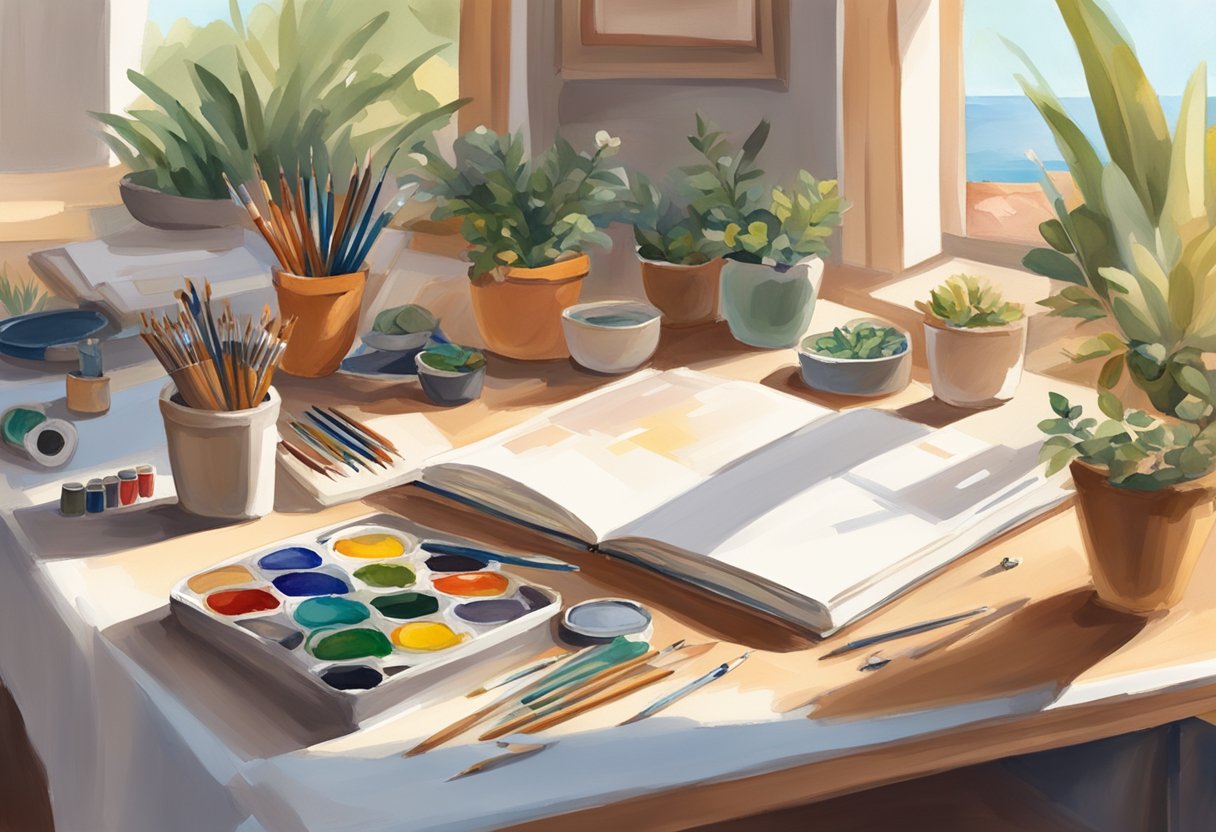
In the context of a gluten-free Mediterranean lifestyle, incorporating leisure activities such as chess, reading, and puzzles can foster personal growth. These activities not only stimulate the mind but also align with the tranquil, health-conscious life intrinsic to Mediterranean cultures.
Chess is a strategic game known for enhancing cognitive abilities, such as problem-solving skills and memory. It requires the player to anticipate opponents’ moves and develop long-term strategies. Individuals often find that the focus and discipline learned on the chessboard translate into improved decision-making in everyday life.
On the other hand, reading provides a wealth of benefits, from expanding vocabulary and knowledge to improving empathy and understanding. Books related to Mediterranean cooking, history, or even novels set in the region can promote an understanding of the gluten-free lifestyle and its origins.
Lastly, puzzles serve as a relaxing way to sharpen the mind. They can improve visual-spatial reasoning and offer a sense of achievement upon completion. Engaging in these intellectually stimulating activities can lead to a well-rounded personal development.
- Benefits of Leisure Activities:
- Cognitive enhancement: games like chess improve strategic thinking.
- Knowledge expansion: reading increases understanding of various topics.
- Stress relief: puzzles offer a calming and rewarding experience.
Each activity contributes to the emotional and mental well-being of an individual, making them ideal for those following a health-oriented lifestyle. While they entertain, they also instill a sense of fulfillment and provide tools for better mental acuity. Whether one is reflecting on the history of the Mediterranean through a good book or solving a puzzle, these pursuits are valuable in the journey of personal growth.
Travel, Adventure, and Craft
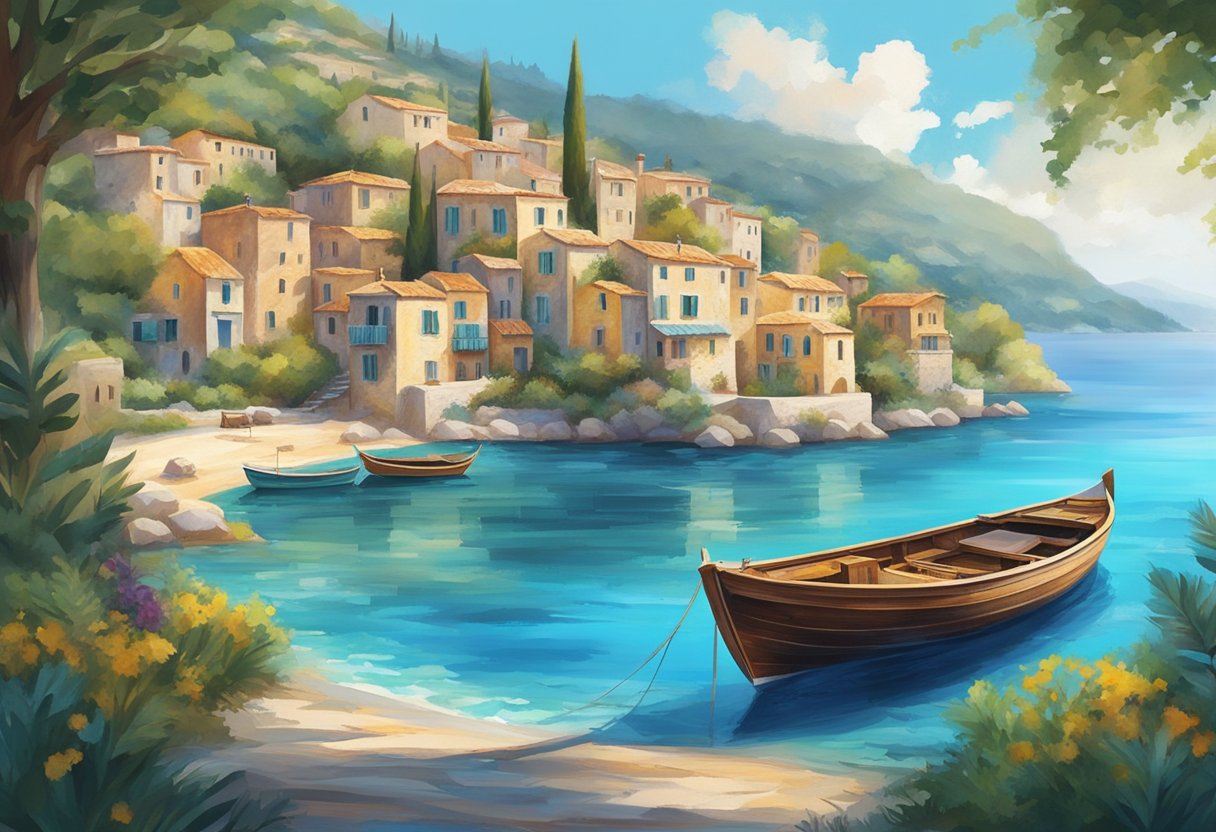
In the heart of the Mediterranean lifestyle lies a vibrant tapestry of travel, adventure, and craft. Here, travelers often seek activities that not only provide a rich cultural immersion but also avenues for self-expression.
Traveling is more than just moving from one place to another; it’s an opportunity to explore Mediterranean crafts that have been passed down through generations. This experience becomes deeply enriching when one indulges in local artisanship, such as pottery or textile weaving.
-
Walking tours offer a chance to stumble upon artisan markets and quaint workshops hidden in narrow streets. These walks can inadvertently become a craft discovery journey.
-
Hiking along the rugged trails presents adventurers with stunning landscapes that inspire. The natural beauty of the Mediterranean can ignite a passion for landscape painting or photography, hobbies travelers can adopt to capture the essence of their journeys.
Crafts, much like the regional diet, embrace the Mediterranean principle of using natural, local materials. They reflect a gluten-free lifestyle by emphasizing purity and simplicity, whether it’s the fibers used in a handwoven basket or the natural dies for fabrics.
Mediterranean travelers often return home not just with souvenirs, but with a newfound hobby or skill that enriches their daily lives. It is this seamless blend of travel and craft that makes the Mediterranean adventure a truly transformative one.
| Activity | Description |
|---|---|
| Pottery Making | Experience the tactile pleasure of molding clay. |
| Textile Weaving | Weave natural fibers into beautiful patterns. |
| Landscape Painting | Capture the scenic vistas with brush and color. |
| Photography | Document your journey with striking imagery. |
The region’s emphasis on natural living is clearly seen in its crafts, echoing a world where travel and personal expression through adventure and creativity go hand in hand.
Frequently Asked Questions
The crafts and hobbies of the Mediterranean lifestyle are rich with tradition and cultural significance. This section addresses common queries about Italian crafts and their integration into different age groups and lifestyles.
What traditional crafts exemplify the Mediterranean lifestyle in Italy?
Traditional Italian crafts like ceramics, glassblowing, and leatherworking are intrinsic to the Mediterranean lifestyle. These crafts not only embody the artistic heritage of Italy but also reflect the region’s dedication to craftsmanship and detail.
How can adults incorporate Italian crafting techniques into their hobbies?
Adults can cultivate their creative skills through Italian crafting techniques by enrolling in classes focused on areas such as Mediterranean cooking that can offer insights into the culinary arts or by exploring sculpting and pottery which tap into the historic practices of Italian artisans.
What are some kid-friendly crafts that celebrate Italian culture for primary school activities?
Primary school children can engage with Italian culture by creating simple mosaic art, fashioning Venetian masks, or making pasta necklaces. These activities introduce them to the vibrant hues and textures prevalent in Italian craft traditions.
Can you suggest crafts that relate to famous Italian landmarks for kindergarten students?
For kindergarten students, crafts such as constructing paper models of the Leaning Tower of Pisa or creating collages inspired by the colors of Cinque Terre can be both fun and educational. These crafts help to connect young learners with Italy’s famous sites.
What hobbies or crafts are well-suited for the elderly within the context of the Mediterranean lifestyle?
Elderly individuals may find enjoyment and therapeutic benefits in hobbies such as gardening, which is central to the Mediterranean lifestyle, or engaging in traditional lace making and embroidery that allows for creativity while honoring Italian cultural practices.
Why is Italy’s art and craftsmanship celebrated globally?
Italy’s art and craftsmanship are celebrated globally due to their historical significance and the unparalleled skill demonstrated in Italian creations. The country’s enduring legacy of artists and craftsmen has contributed to a worldwide appreciation for its culture and aesthetics.

